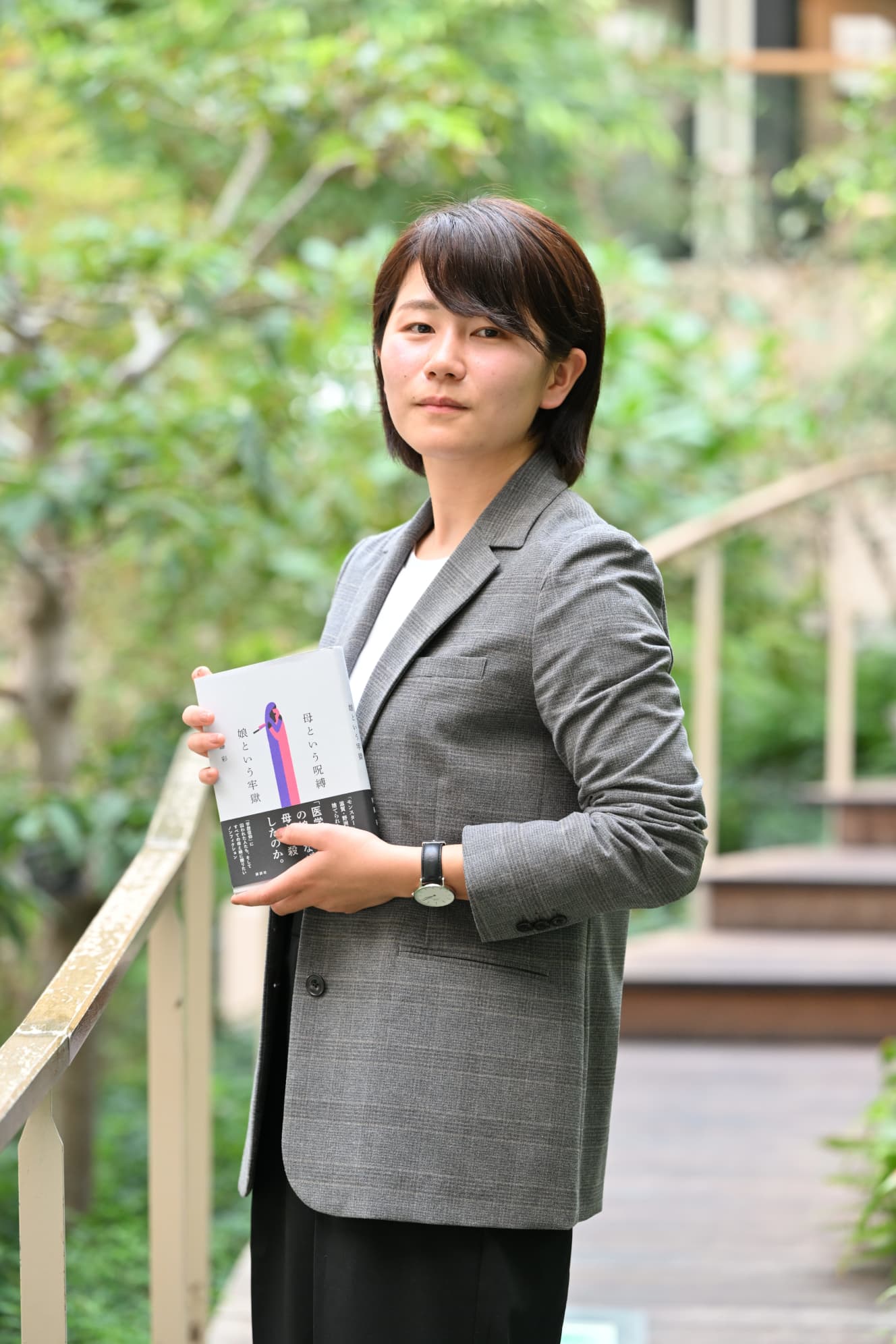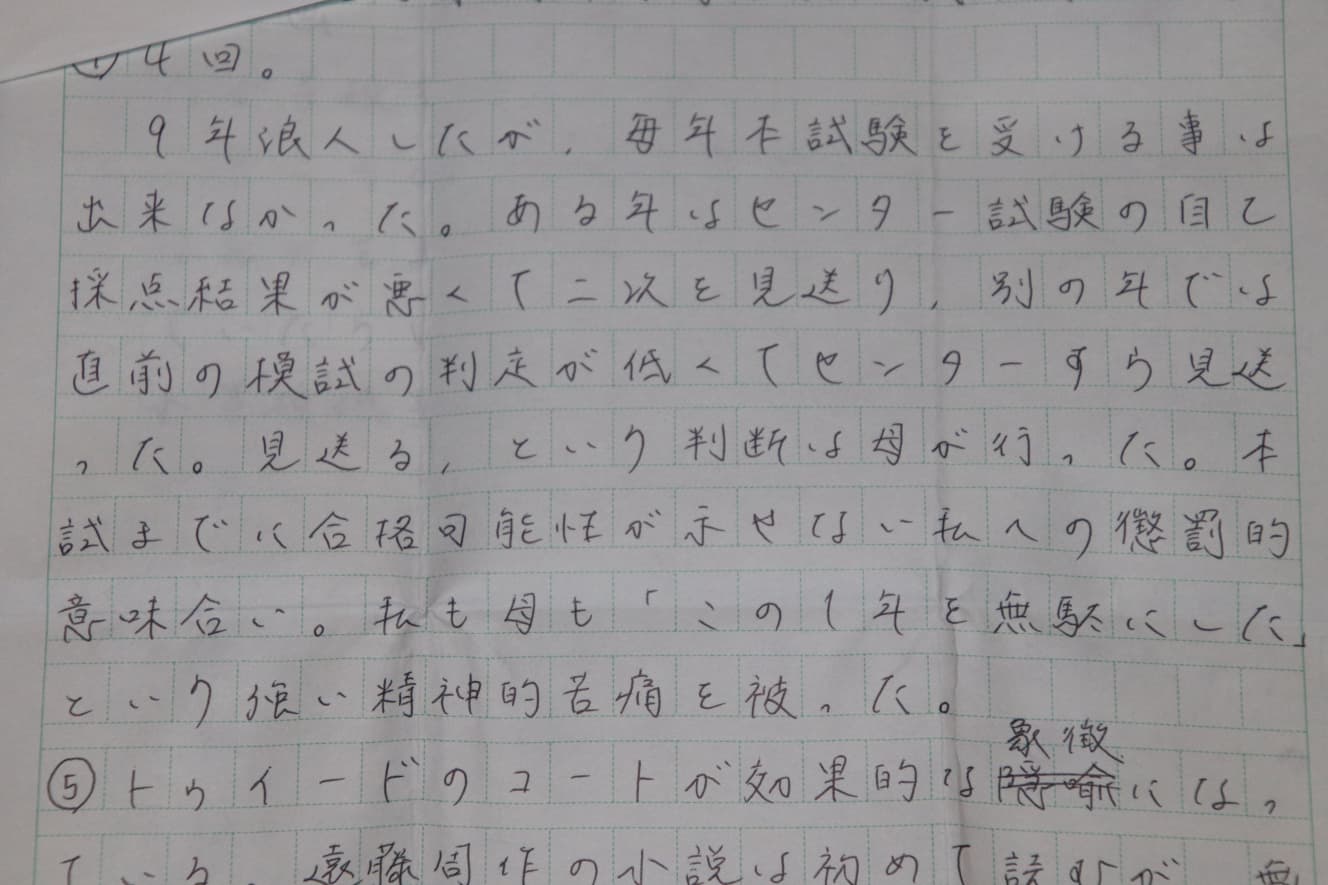Daughter of 9 medical school waifs dismembers her mother…! The “reality” depicted by the author in the popular book, “The Curse of the Mother, the Prison of the Daughter

In March 2006, parts of the body of a 58-year-old woman were found on the banks of the old Yasu River in Moriyama City, Shiga Prefecture, with her hands, feet, and head severed. 3 months later, police arrested her daughter, Akari Takasaki (pseudonym, 31 at the time), on suspicion of abandoning the body, and in September of the same year, she was arrested again on suspicion of murder. In the subsequent trial, Akari denied killing her mother until the first trial, but at the second trial, she admitted that she had killed her mother with her own hands.
Akari’s daughter Akari had a history of being a ronin for nine years in order to pass the entrance exam for university medical school. Her mother, who died, dominated her from an early age. She constantly monitored Akari while she was a ronin and beat her with an iron pipe when her grades did not improve as expected. Shortly after 3:00 a.m. after killing her mother, Akari took to Twitter and wrote, “I beat the monster. I’m relieved now.” It is known that Akari posted on Twitter, “I beat the monster.
Although this story sounds like something out of a novel, this is an actual incident. A nonfiction book titled “Haha denjuubaku: Daughter den jogoku” (Kodansha), which meticulously describes the process of contacting the perpetrator and leading up to the incident, has received a huge response and is currently in its seventh printing with 50,000 copies in print.
The author, Aya Saito, wrote the book at the age of 27 after leaving Kyodo News after working as a reporter in charge of justice in the company’s social affairs department. After its publication, the book was praised for its meticulous coverage of the inner life of the daughter who killed her mother, but it was also criticized for “only depicting the daughter’s side of the story” and “this is not non-fiction. Saito says that he was prepared for such criticism, but still dared to write the book by staying close to Akari, the daughter who dismembered and killed her mother. What did he want to convey by depicting the story from the daughter’s point of view? We interviewed Mr. Saito.

-We heard that you first came in contact with Akari Takasaki when you were working as a judicial reporter for Kyodo News, and that you received a great response when you posted an article on the Internet after eight visits and correspondence with her. Did you have any intention of writing a book about this case when you first started covering it?
No, I had no idea. As a reporter covering various incidents, I always try to contact the people involved, including the perpetrators. However, it was rare for me to actually meet them, and this was the first time for me to exchange so many letters directly with them. When I interviewed Akari and wrote a digital article of about 5,000 words and uploaded it, the response was quite positive, so I was satisfied with that. Then, I received an offer from an editor to publish the article as a book, and I decided to give it a try. From there, about 90 I decided to give it a try because I had to.
-What kind of person did Akari seem to you?
I wanted to avoid preconceived notions, such as, “She is a murderer, so she must be like this,” so there were no gaps in my expectations. During the interview, I had sent him questions in advance, and he spoke clearly and without hesitation about what he had prepared. I strongly felt that Mr. Saito is a person who is quite connected to the people we usually come in contact with.

FRIDAY Digital obtained a portion of a memoir written by Akari to Mr. Saito, the author of this book. Akari’s handwriting is neat and neat, and her familiarity with writing is evident. The writing is clear and follows the structure of the book, and there is no sense of abnormality, such as “dismembering the mother. What kind of person is Akari?
-What was different about Akari from other defendants?
I think she had something to say. I knew before I met her that she must have something she wanted to say about this case as a human being. I don’t think I was able to understand everything she wanted to say through the interview, but I believe that she was interviewed because she wanted people to understand her situation and to make amends for the fact that she had denied the murder until after the first trial. I think she wanted to make amends for the fact that she had denied the murder until after the first trial.
-What was your reaction when you told her that you wanted to write a book about the interview?
At first, he was not at all enthusiastic. I think it took three to four months from the time I approached him to the time we conducted the interviews for publication. It was like he finally gave me permission after negotiating in various ways. Although she agreed to be interviewed, considering her life after her release from prison, there was no need to publish a book that would remain as a memento of her life. In that sense, it may be a little contradictory to what I said earlier, but I think she did not want to say everything about herself.
-This book describes the epic relationship between mother and daughter for about 30 years leading up to the incident, including nine years of medical school wandering. The mother forced her then 27-year-old daughter to get down on her knees in a winter garden and filmed her doing so, and she pretended to be her daughter and wrote letters to relatives……. The mother repeatedly behaved in a manner that was, to all intents and purposes, abnormal. In her trial statement, Akari went so far as to state, “I am convinced to this day that if either I or my mother had not died, [this relationship] would not have ended. What was the initial stumbling block that led the daughter and her mother to be trapped in this kind of bizarre relationship and situation?
I don’t think there was a definitive stumbling block or turning point. I also asked, “Why did the mother and daughter have such a simmering relationship?” and I started the interview because I wanted to know why. However, when I pieced together what I had collected, I found that there was no definitive turning point, such as a change in the mother’s personality at a certain point in her life. So, I wrote the story without any particular plot points or forced rationales. When I finished writing the whole book, I was concerned that the content, although true, would be redundant and boring to the reader. I was concerned that it might be too verbose and boring for readers, even though it was true. But what is written here is the undeniable truth, and I can’t flesh it out any further. There is no definitive event, but I think one answer to this piece is that a mother and daughter had a difficult time.

-I have heard that many readers have commented that they too can understand Akari’s feelings and think that they too could have been like this. I think the fact that Ms. Saito herself went into her life quite deeply and wrote this book is the reason why readers were able to empathize with her. However, as a journalist, it can be frightening to enter deeply into the life of a subject, as you may become absorbed in the story and lose an impartial point of view.
As for this book, I think it disqualifies me as a journalist in terms of the distance I feel from the subjects I cover. A news reporter cannot be impartial unless he or she is willing to give up a certain distance from the subject of the interview. I have also been a member of a news agency, so I have been skeptical in a good sense, and have kept a distance from the subjects I have covered. However, as I proceeded with this interview, for better or worse, I felt the distance between my heart and Akari’s, and in the end I had no choice but to write about her life as if I had been there myself. So, I have been criticized by people in the journalism world, and I think that is to be expected. I, too, am a “daughter,” not a mother. I think this work was made possible because I was able to stand by Akari in that respect.
-Did your mother read this book as well?
Yes, she did. She was happier that her daughter published a book than the content. I realized that I am her daughter after all. So, my impression of the book was just, “You did a good job of researching the book” (laughs). (laugh).
(laughs) – Do you plan to work as a nonfiction writer in the future?
I have no plans at all. I was able to write this book because of a combination of luck and fate. I was able to produce something that was beyond my experience and ability, so I wondered if I would ever be able to reproduce this quality. When I think about it, I can’t say that I can …… do it or that I want to do it. I thought that writing a book would be an extension of the interviewing and writing of articles that I did when I was a reporter, but when I actually tried it, I found it extremely difficult. I was reliving the 30 years of her suffering by interviewing her and looking at various records, and I found myself becoming very distressed. I sometimes had trouble sleeping, and I think it was a very special environment. I would like to think about the future once I have calmed down.
-In the preface of this book, you write, “I want to bring this book to all people who are struggling with family relationships. Do you want such people to pick up the book in the future?
I would like it to be read by mothers in particular. I would like mothers to read the book, especially those who are mothers, and to think about whether they are not tormenting their daughters because they love them. I hope this book will be an opportunity for them to do so. I hope this book will be an opportunity for them to do so.
On January 26, 2009, the Osaka High Court sentenced the mother to 10 years in prison on the grounds that her daughter had been subjected to “abnormal interference and surveillance” that led to her murder, and that there were some aspects of the circumstances that were worthy of sympathy. The case is a horrific incident that was born out of a frayed spot in anyone’s life. This is a book that should be read by those who have never read nonfiction before.

Photo by: Takero Bund